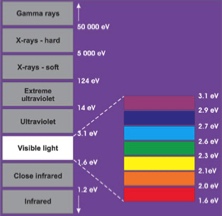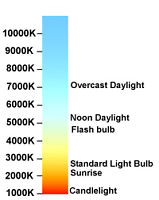
Crystal color and properties
Colorless, white or violet these colors open the door of perception; bring unity with the Universe and transcendental love.
Red crystal is a symbol of life, vitality, power. It moves energies, it worms up.
Orange crystals encourage life energy, self-control and regulate the functioning of the sexual glands.
Yellow crystals help the indigestion, influence the normal functioning of the liver, gallbladder, kidneys and spleen. They release subconscious fears, and promote balance.
Green crystals represent the color of love, health, harmony and creativity. They help with heart disorders, regulate the blood pressure, calm the nerves and stimulate love.
Pink crystals bring gentleness and softness.
Light-blue crystals expand faith, protection, trust, inspiration. They purify and stimulate self-assurance.
Dark-blue crystals promote mental abilities and psychic stability.
Indigo colored crystals bridge the span between the limited and limitless. They bring universal knowledge and wisdom, cure the eyes, deal with insomnia and stabilize mental perception.

Crystals and Minerals - Lighting and Monitors, how they can effect appearance
The introduction of full spectrum, sunlight and a wide variety of other lighting choices makes the appearance of Crystals and Minerals (particularly those with optical qualities) a not so simple aspect to understand. To understand how Crystals can be enhanced by lighting, and why the Crystal or Mineral a buyer receives may not look like the picture they saw, one needs to understand a little about how an object behaves under different lighting, and why. I apologize in advance if this gets a little technical, but, in order to make informed decisions on Crystal purchases one needs to have some info on color.
Lighting basics
Lighting can have more blue (shorter wavelengths) which is the "Cool" lighting, or Red (longer wavelengths) the lighting described as "Warm". The visible spectrum of light, generally, is from about 390 nm (Violet) to 750 nm (Red). The wavelength is measured in Nanometers (the nm) which is one billionth of a meter. The following graphic shows a typical visible light spectrum.
Many objects reflect light. The color seen is a result of the reflected light. Said another way, the object absorbs all wavelengths of light BUT the wavelengths reflected, which is what a person sees (the color white reflects all wavelengths, black absorbs all - which is why a black item gets hotter under the sun, because it is absorbing all the radiation). The objects color is not quite that simple when it comes to Crystals though, because some Crystals can also transmit light (translucent - where the object scatters some of the light, or, transparent - passes the light without scattering). To complicate it even more, opaque Cystals have specular reflection (appears mirror like) and others can even emit light (luminescent) such as Labradorite or Opal.
Yet another consideration is something called color temperature which you’ll see described as K (Kelvin). A 6500K light bulb is supposed to provide close to the same light spectrum as the Sun at noon on a clear day. Noon day sunlight is actually often closer to 5500K which has a little more red and appears more white. Even Sunlight has different color temperatures depending on the time of day and cloud cover (a cloudy day may be 7000K, cooler – more blue, and a sunset 2000K, warmer - more red). The following graphic shows a general color temperature chart:
So what’s it all mean? Well, for the purpose of purchasing a Crystal, the color can be enhanced quite a bit under the right lighting and it might not look quite as attractive once displayed at home under a different color temperature. As an example, Celestite under a cool light (one with more blue - 7000K+) will appear bluer because there is more blue for it to reflect and/or scatter (and less red), Carnelian on the other hand will appear more vivid under a warm light (more red, less blue). Keep in mind these statements are general and intend to provide an overview without becoming too technical. We typically make an attempt to present items in both actual sunlight (often filtered through a clear window) in addition to 5000 - 6000K lighting. Crystals that exhibit translucent properties such as most quartz (Amethyst, Smoky, Citrine) some Celestite and Fluorite, Topaz, etc., can have their appearance changed significantly by lighting and sunlight (late afternoon sunlight can make a dark Amethyst look much more pale).
Monitors
Monitors also have a color temperature associated with them. Depending on the monitor type, graphics card and other system factors, your Monitor may be anywhere from 5000K to 9300K (or even cooler). As you can imagine, this can significantly change the color you see in the Crystal photos and will be at least slightly different from Monitor to Monitor, unless they have been calibrated to the same color temperature. Calibration is somewhat complex, but you can get a pretty fair likeness if your monitor has a color temperature setting. Using the K chart, select a monitor color temperature that is closest to the lighting to be used where the Crystal will be displayed (most lights now have the color temperature marked on the package, 2600K soft white, 5000-5500K daylight, etc.). If the photo is taken under an approximately 5500K light, the crystal should appear very close to what it will look like under noon day sunlight.
You are also able to set the color depth of a monitor using the setting in the control panel, under display>settings, should be as high as possible (at least 24 bit color) in order to more correctly render color (more bits allows more colors, 8 bit color renders only 256 shades, 24 bit on the other hand is over 16 million shades - 256 shades each of R, G and B). For some, depending on the graphics card, memory and display resolution 24 bit color (True Color) may slow down the computer performance. Reducing the screen resolution (in the same control panel>display location as the color depth) may be enough to use 24 bit color without slowing the machine down.
The introduction of full spectrum, sunlight and a wide variety of other lighting choices makes the appearance of Crystals and Minerals (particularly those with optical qualities) a not so simple aspect to understand. To understand how Crystals can be enhanced by lighting, and why the Crystal or Mineral a buyer receives may not look like the picture they saw, one needs to understand a little about how an object behaves under different lighting, and why. I apologize in advance if this gets a little technical, but, in order to make informed decisions on Crystal purchases one needs to have some info on color.
Lighting basics
Lighting can have more blue (shorter wavelengths) which is the "Cool" lighting, or Red (longer wavelengths) the lighting described as "Warm". The visible spectrum of light, generally, is from about 390 nm (Violet) to 750 nm (Red). The wavelength is measured in Nanometers (the nm) which is one billionth of a meter. The following graphic shows a typical visible light spectrum.
Many objects reflect light. The color seen is a result of the reflected light. Said another way, the object absorbs all wavelengths of light BUT the wavelengths reflected, which is what a person sees (the color white reflects all wavelengths, black absorbs all - which is why a black item gets hotter under the sun, because it is absorbing all the radiation). The objects color is not quite that simple when it comes to Crystals though, because some Crystals can also transmit light (translucent - where the object scatters some of the light, or, transparent - passes the light without scattering). To complicate it even more, opaque Cystals have specular reflection (appears mirror like) and others can even emit light (luminescent) such as Labradorite or Opal.
Yet another consideration is something called color temperature which you’ll see described as K (Kelvin). A 6500K light bulb is supposed to provide close to the same light spectrum as the Sun at noon on a clear day. Noon day sunlight is actually often closer to 5500K which has a little more red and appears more white. Even Sunlight has different color temperatures depending on the time of day and cloud cover (a cloudy day may be 7000K, cooler – more blue, and a sunset 2000K, warmer - more red). The following graphic shows a general color temperature chart:
So what’s it all mean? Well, for the purpose of purchasing a Crystal, the color can be enhanced quite a bit under the right lighting and it might not look quite as attractive once displayed at home under a different color temperature. As an example, Celestite under a cool light (one with more blue - 7000K+) will appear bluer because there is more blue for it to reflect and/or scatter (and less red), Carnelian on the other hand will appear more vivid under a warm light (more red, less blue). Keep in mind these statements are general and intend to provide an overview without becoming too technical. We typically make an attempt to present items in both actual sunlight (often filtered through a clear window) in addition to 5000 - 6000K lighting. Crystals that exhibit translucent properties such as most quartz (Amethyst, Smoky, Citrine) some Celestite and Fluorite, Topaz, etc., can have their appearance changed significantly by lighting and sunlight (late afternoon sunlight can make a dark Amethyst look much more pale).
Monitors
Monitors also have a color temperature associated with them. Depending on the monitor type, graphics card and other system factors, your Monitor may be anywhere from 5000K to 9300K (or even cooler). As you can imagine, this can significantly change the color you see in the Crystal photos and will be at least slightly different from Monitor to Monitor, unless they have been calibrated to the same color temperature. Calibration is somewhat complex, but you can get a pretty fair likeness if your monitor has a color temperature setting. Using the K chart, select a monitor color temperature that is closest to the lighting to be used where the Crystal will be displayed (most lights now have the color temperature marked on the package, 2600K soft white, 5000-5500K daylight, etc.). If the photo is taken under an approximately 5500K light, the crystal should appear very close to what it will look like under noon day sunlight.
You are also able to set the color depth of a monitor using the setting in the control panel, under display>settings, should be as high as possible (at least 24 bit color) in order to more correctly render color (more bits allows more colors, 8 bit color renders only 256 shades, 24 bit on the other hand is over 16 million shades - 256 shades each of R, G and B). For some, depending on the graphics card, memory and display resolution 24 bit color (True Color) may slow down the computer performance. Reducing the screen resolution (in the same control panel>display location as the color depth) may be enough to use 24 bit color without slowing the machine down.

